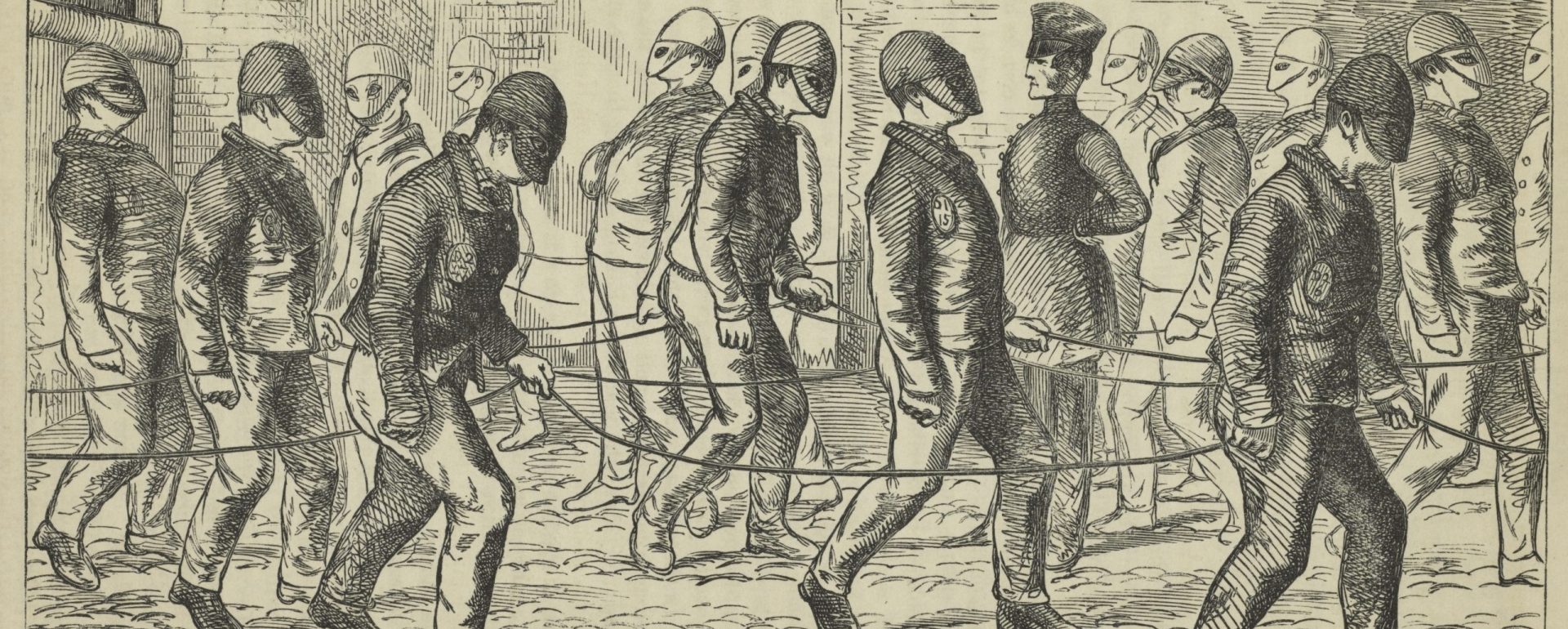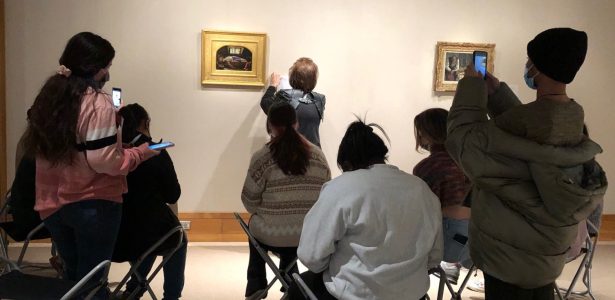Connecticut has many galleries, museums, and other sites of interest that provide opportunities for hands-on learning that can significantly influence students’ perspectives on their careers, personal growth, interpersonal interactions, and environment. I have taken three groups of students on field trips and heard firsthand the profound impact these trips had on them. Many had never set foot in a gallery or museum, often because they did not view these spaces as being accessible to them. In my “Representations of ‘the Criminal'” course, students visited the Yale Center for British Art, the Yale University Art Gallery, and the Beinecke Library, where they viewed artwork and historical documents that required them to hone their ability to separate objective observation from subjective opinion as a way to question their assumptions and reimagine what they understood by the label “criminal.”
At the Yale Center for British Art (YCBA), students were introduced to object-based learning. In object-based learning activities, a viewer looks closely at a work of art with an implied narrative and describes the art as objectively as possible before developing an interpretation. First developed twenty years ago for medical and nursing students by Linda Friedlaender, Head of Education at the YCBA, and Professor Irwin Braverman, Professor Emeritus of Dermatology at Yale, this skill-building method has applications for a wide variety of fields including the health sciences and criminal justice.1 More information about the program for Yale healthcare students can be found here.
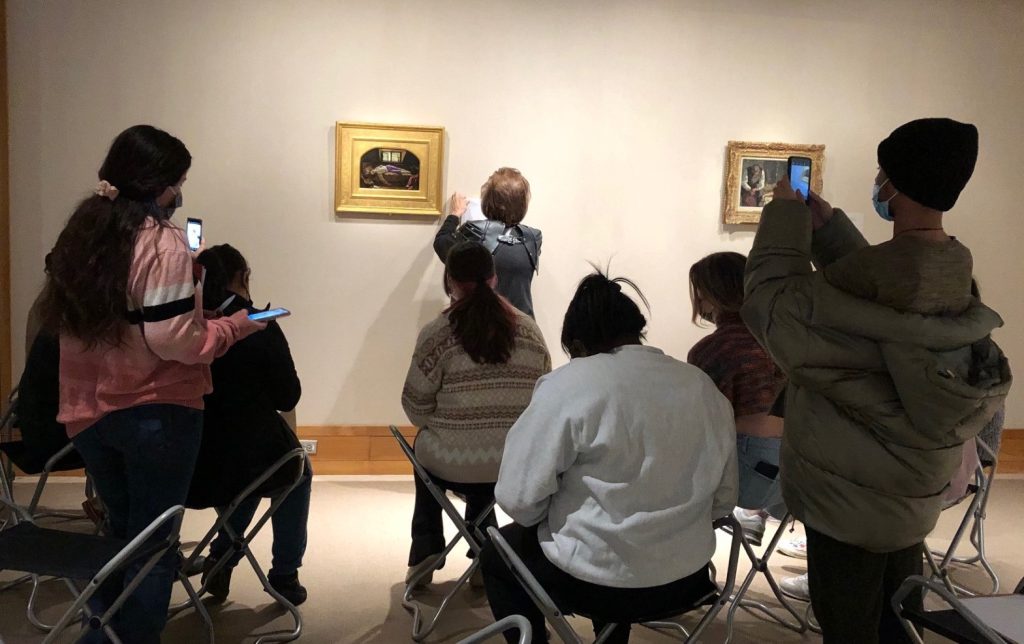
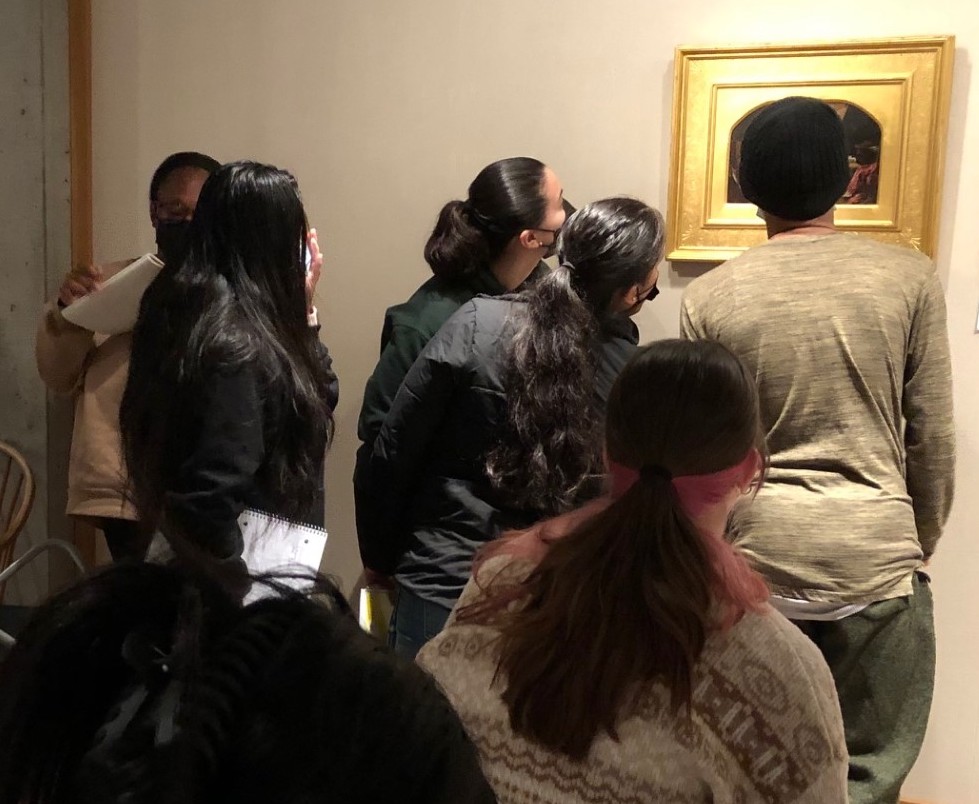
Before our first session at the YCBA, we read art historian Jennifer L. Robert’s Harvard Magazine article “The Power of Patience,” which argues that patience is a crucial skill that students in the 21st century must be taught in order to succeed in their careers and life, and that observing paintings is one way it can be cultivated. My students were captivated by the notion that they could look at a single painting for more than a few seconds – let alone three hours, as Roberts required of her class – and still find new elements to notice. Roberts explains that a close looking exercise like this:
“[…] shows students […] that just because you have looked at something doesn’t mean that you have seen it. Just because something is available instantly to vision does not mean that it is available instantly to consciousness. Or, in slightly more general terms: access is not synonymous with learning. What turns access into learning is time and strategic patience.”
Jennifer L. Roberts
At the beginning of our visit, students spent about twenty minutes huddled in a small semicircle, looking closely at Henry Wallis’s painting The Death of Chatterton (ca. 1856) and jotting down their observations on clipboards. Our facilitator, Linda Friedlaender, asked the group what they saw objectively in Wallis’s painting – with no interpretation or conjecture. Any time someone made an assumption about what they observed, they were asked to reframe their response in terms of what was physically present on the canvas (regarding, for example, color, shape, size, or position). Only after the group had exhaustively described what they saw were they invited to make an interpretation of what was happening in the painting. One aspect of this exercise that students find most surprising is not simply that their final interpretations differ, but that even what they think they see objectively often varies widely. In a reflection about the gallery visit, one Forensic Science student explained:
“The Death of Chatterton art piece exercise was directly related to one of the articles we read about in the “Power of Patience,” and how the more you observe something with a careful eye the more you see. I loved this activity because I felt like I could do what I have been training for, for the past few years in a low-stake environment, where there are no repercussions of coming to the wrong conclusion at the end. I also loved hearing the different opinions from my classmates. Even though some of their ideas were vastly different from my own, they did offer a different perspective. Listening to how they came to their own conclusion and relating them back to their field of study made me realize that maybe this instinct is that of a student or just being passionate about a field. While this way of thinking happened to help me in analyzing this art piece, I can also see how it can cause me to have a narrow way of thinking. I realized this when I was hearing the unique perspective from my classmates. Even though this can help me be better in my field, it can limit me to seeing bigger pictures in everyday life.”
Neisha Lovett, Forensic Science Major
Another Forensic Science student drew connections to the immense responsibility required of their field:
“At the end of the activity, I realized that whenever I’m presented with something, I tend to look at the bigger portion of it, and forget about the details that help make that big portion significant. This realization was very important to me, since I am a forensic science major, because in my field the concept of attention to detail can quite literally mean the difference between freedom or a prison sentence for an individual. If I can’t take in the minor, almost insignificant parts of something, I can’t expect to understand or infer when it comes to talking about the major parts of that same thing; for a better comparison, I’d be putting the pieces of the puzzle together, and they would fit, but I wouldn’t be putting the correct puzzle together.”
Soleyl Gonzalez, Forensic Science Major
How many times have we heard of criminal justice professionals – even inadvertently – deciding on the way a final “puzzle” should look in advance and then manipulating the evidence to fit that conclusion? Object-based learning demands that students focus extensively on what is in front of them before offering a conclusion, and always in conversation with others who have different views.
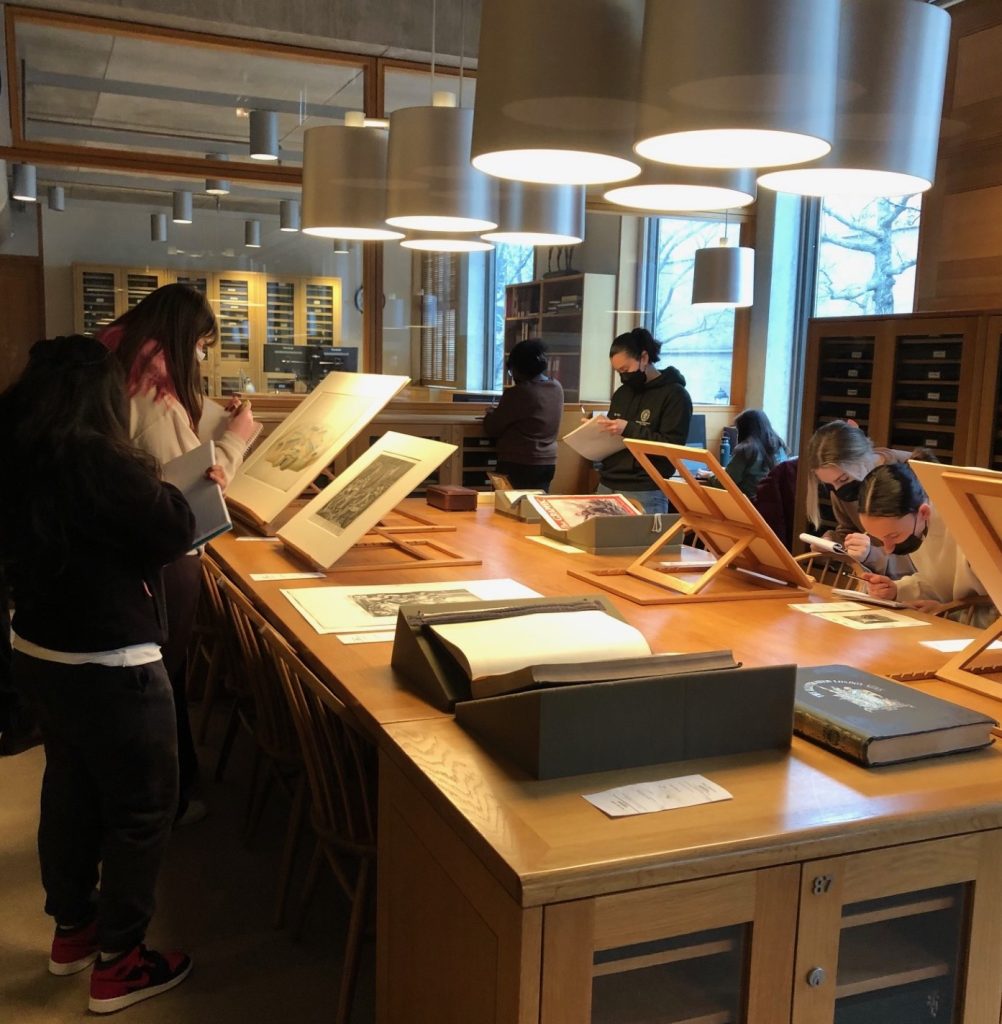
At first glance, looking at paintings might seem completely irrelevant to the career goals of students in the Henry C. Lee College of Criminal Justice and Forensic Sciences. However, my students quickly began making connections between the importance of observation, interpretation, and the construction of narrative, and what would be demanded from them as they make potentially life changing decisions for other people in their future careers. Planning and executing a field trip is no small task, though. Lack of familiarity with archival resources, scarcity of funding for transportation, and difficulties with scheduling are just a few of the hurdles that must be overcome for a successful experience. At the “Faculty Resources” tab above, I describe my field trip planning process in detail and share links to resources. I hope this will encourage faculty who would like to take their students on field trips, but who may not know where to begin.
